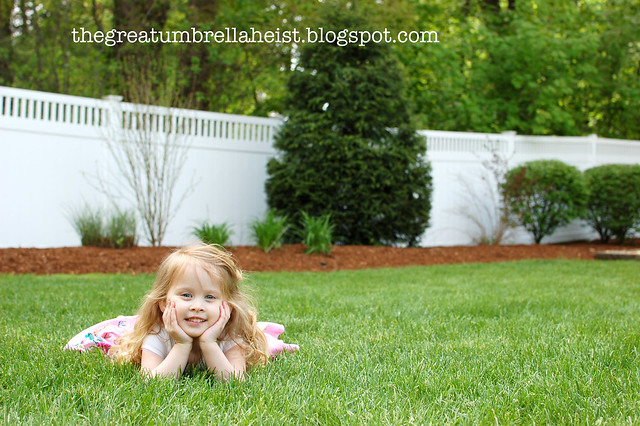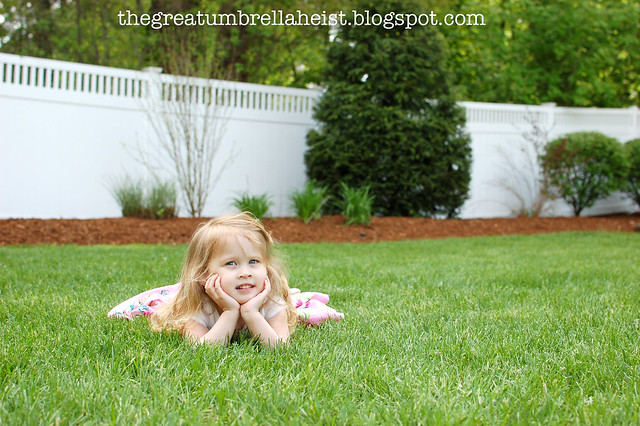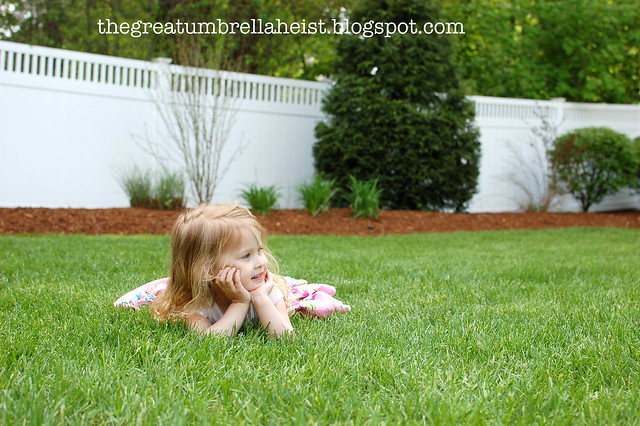Based upon some of the comments and emails I have received after posting photography stuff, I have decided to create some lessons on how to use your camera in manual. I am self taught, which means I had to read and research quite a bit on my own. (In addition to practicing and practicing and practicing.) What I found in doing this reading and researching is that some stuff is just way too technical or hard to understand for beginners.
One of the first (quick) lessons you should learn is the difference between manual focus and manual settings. Some beginners use these terms interchangeably, not realizing that there is a difference. In fact, there is a big difference between the two.
Manually focusing means that you are turning the ring on the lens in order to focus your subject. In my opinion, you do not need to be manually focusing, especially if you are a beginner. If you are photographing children, you are going to become very frustrated very quickly if you are trying to manually focus. (Yes, I understand that there are times when you would want to manually focus but we won't be discussing those.) I actually never manually focus.
To take photographs "in manual" or to use manual settings, means that you are setting your ISO, shutter speed and aperture. (Not necessarily in that order. But we'll get to that later.) If you use your camera on the auto function, the camera is deciding what the ISO, shutter speed and aperture should be.
What I want to do is teach you the basics so that you can use the manual settings on your camera.
One of the first (quick) lessons you should learn is the difference between manual focus and manual settings. Some beginners use these terms interchangeably, not realizing that there is a difference. In fact, there is a big difference between the two.
Manually focusing means that you are turning the ring on the lens in order to focus your subject. In my opinion, you do not need to be manually focusing, especially if you are a beginner. If you are photographing children, you are going to become very frustrated very quickly if you are trying to manually focus. (Yes, I understand that there are times when you would want to manually focus but we won't be discussing those.) I actually never manually focus.
To take photographs "in manual" or to use manual settings, means that you are setting your ISO, shutter speed and aperture. (Not necessarily in that order. But we'll get to that later.) If you use your camera on the auto function, the camera is deciding what the ISO, shutter speed and aperture should be.
What I want to do is teach you the basics so that you can use the manual settings on your camera.
On my camera (Nikon D50), the auto function is a green "Auto" on the dial. Manual is the black M.
I've always been interested in photography but I didn't know what I was doing in the beginning. I took a lot of photos but I didn't know what aperture meant. When I finally decided that, hey, I can figure this out, I was confused by manual settings. I thought that photographers had different settings for different situations memorized. This is not the case. So if I post a portrait of Anna with the settings, don't feel that you have to memorize those settings because chances are, those exact settings wouldn't work for your portrait because the lighting will be different.
I do think that it is okay for folks just starting out to use their cameras on auto. For two reasons. First, it gives you a chance to practice composing photos without trying to adjust your settings. Second, you will soon recognize the importance of manual settings. I used auto when I first started out. I would look at my pictures and say, "Why does that look like X, Y or Z? I want it to look like A, B or C."
I do think that it is okay for folks just starting out to use their cameras on auto. For two reasons. First, it gives you a chance to practice composing photos without trying to adjust your settings. Second, you will soon recognize the importance of manual settings. I used auto when I first started out. I would look at my pictures and say, "Why does that look like X, Y or Z? I want it to look like A, B or C."
I mentioned composition above because I have seen many newbies post photos looking for construction critcism when they learn to use manual on their camera. In some cases, the photo may be technically correct (or close to it) but the composition is off. For example, a tree branch may be growing out of someone's head or there's a garbage can in the direct background of a little girl twirling around in a princess dress or someone's feet are cut off.
Unfortunately, composition is often overlooked, which is why you need to practice framing out your photos. We'll have a composition post later but for now, I will leave you with an example of my composition screw-up.
These are from the party last Saturday. I had my camera in hand when all of a sudden Allie plopped down on the grass in this cute pose. I was wearing nice (as in 'wear to work') pants that were a cream color so positioning myself in the grass was not easy to do and took longer than I wanted it to. I had my ISO and f-stop set already and was simply metering for the shutter speed in order to take a photo with the correct exposure.
I snapped off these photos in a matter of seconds and then Allie was up and gone.


I wish that I had been closer to her but, alas, I was using a prime lens (don't worry if you don't know what this means) and didn't really feel like army crawling in my nice pants. I feel that she is a little lost in the landscaping. Having the bushes and greens out of focus in the background helps but unfortunately, she does look like she has some green or branches popping out from her head.




11 comments:
So cute. I love when you post camera tips!
I just got a Nikon D3000....so would love any tips I can get on using it in manual rather than auto! Bring it on!
I've just learnt to use manual mode so its good to have someone confirm im doing the right thing!
My interest is portrait work also. I have a nikon d5000 and am considering buying a sigma 50mm f1.4 this weekend. Do you think thats a good choice of lens for what I want to photograph?
I am so looking forward to more tips/lessons on manual. Thank you!
Your photos are always so well composed and technically perfect. I think photography is such a fun hobby to learn on your own, especially when you have young lives to document!
What a helpful post! Great clarification between shooting manually and focusing manually. I look forward to reading more of your camera tips. :)
I think if you cropped the photo a bit so that she fills up more of the left side of the frame, it will be really striking. I don't mind the background. Sometimes it's nice to have actual *things* in the back instead of super blurry bokeh just for refernece.
I love your blog. these are so great! I'm a big time mom photographer too but you have much better gear than I do. anyway, I'm a new follower! and excited to see you future posts.
I just started up a new blog (I have 2 others too!) but this is a baby & kids gear blog. I'd love to have people show up.
kathryn
www.thebusybeefamileee.blogspot.com
Soph - I would make sure that the lens will autofocus on your camera.
50mm is a decent focal length but for portrait work, the compression of 85, 105, etc is more flattering. But again, 50mm isn't bad. If you can't afford multiple lenses 50mm is the way to go. 85mm is going to be tight to use inside for anything but portraits.
Thank you so much for the photo tips... your pictures are great. Can you write about aperture in your next post? You do a nice job explaining :)
Love this post I am trying to figure out how to put my D3000 to good use and this really helps!
Post a Comment